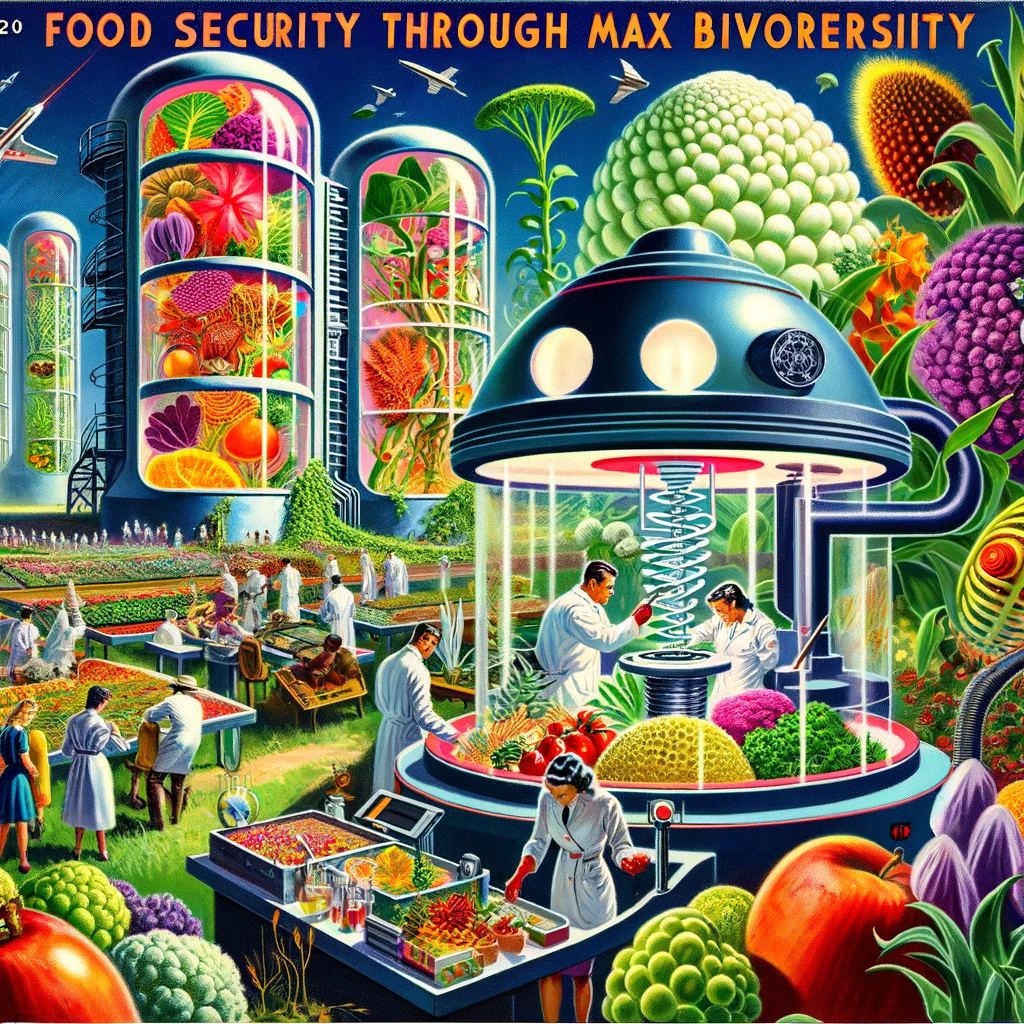
For the last few months we have been participating in the Musae S+T+ARTS Residency. We are one of ten artists in this program, and for the first half of the residency have been asked to follow “Design Futures Art-Driven (DFA) methodology” in the process of developing a future scenario related to food and technology.
In this project we are actively encouraged to use generative AI tools, so this is the first time Genomic Gastronomy has experimented with AI image generation, using DALL-E in Chat GPT 4. While we also played around with ChatGPT for text generation in earlier phases, we decided to write our own script for the final submission, because the prompt engineering for text was more trouble than it was worth for the lengths of text we were generating. We had fun experimenting with image generation and tested out several different tones and aesthetics to tell our stories within stories.
Below you can see and read the scenario we presented in December to mark the halfway point of the project. Our next step is to take this scenario as inspiration for creating an artwork that will be shown in Barcelona in April.
The Scenario
In 2033 the buzzword in every part of the food system is biodiversity. Attempts earlier in the 21st century for food systems to be chemical free or carbon neutral, had limited uptake and impact.
After the quite radical Maximizing Biodiversity legislation was approved by the European Commission in 2028, the increase in agricultural and wild biodiversity has had a big impact on the food system, with tangible and measurable changes and impacts, both good and bad.
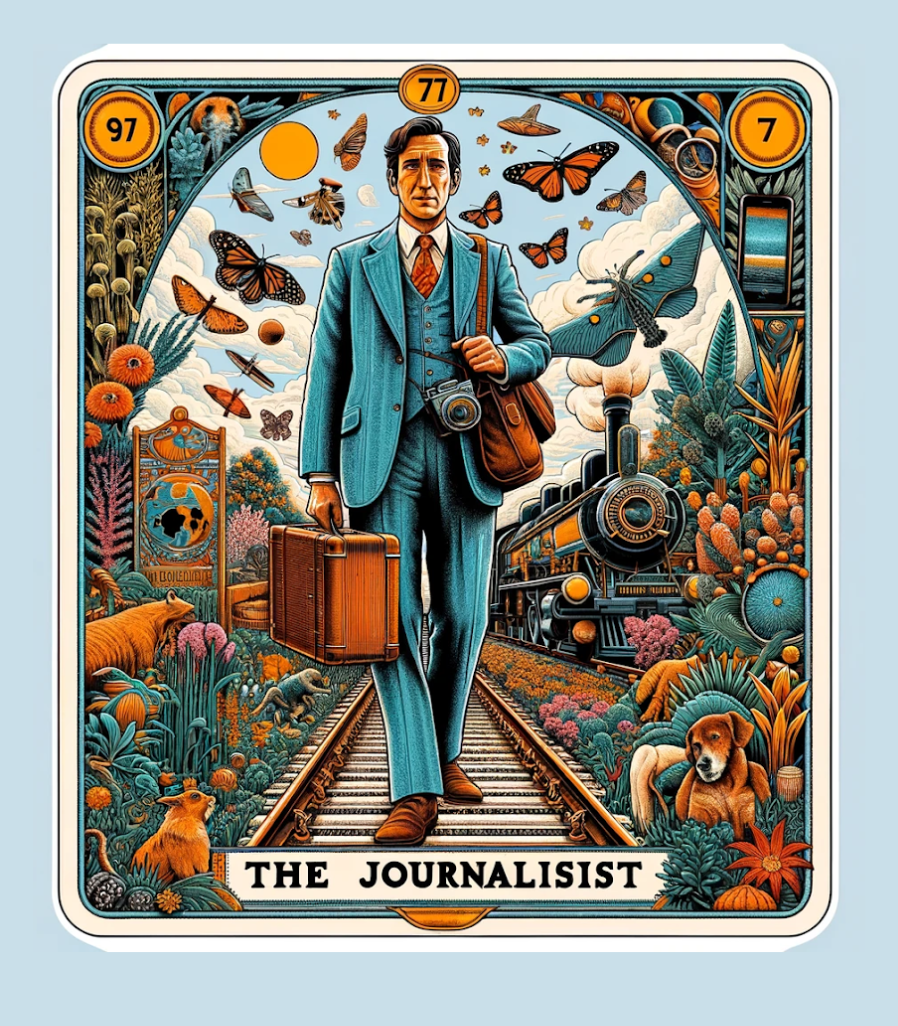
Meet the Journalist
A journalist named Max travels around Europe to write an article. His assignment is to describe how various stakeholders in the food system are adapting to the new EU agricultural rules which tie payments to demonstrated increases in agricultural and wild biodiversity.
From radical fringe groups in remote areas, to the largest ag-tech corporations, everyone is looking for ways to make kitchens, farms, and rural landscapes more biodiverse.
He is particularly interested in talking to the farmers and citizens that feel left behind by the new focus, and the network of regenerative farmers and food producers who work to heal agricultural landscapes. On his journey he will interview four people and attend two events. Below is a map of his journey.

Stop 1:
Where: Portugal Who: Inês What: Food Forest Technician.

His first stop was Portugal where he interviewed Inês – a pioneer in optimizing emerging technologies for biodiversity & environmental healing; transforming neglected landscapes into thriving ecosystems through a unique blend of traditional wisdom and cutting-edge technology. With a background as a certified drone technician, Ines has evolved into a visionary farmer and environmentalist, fusing traditional agricultural practices with modern technology and community engagement.
“I started out as a certified drone technician but now I consider myself a pioneer farmer, especially for the coastal landscapes of northern Portugal. In the early 2010s, I was working with satellites, sensors and drones. At the time, the obvious application for these technologies was in the military, but I soon saw a different opportunity.
I had inherited a neglected plot of land, so I began using technology to help me grow and monitor trees, plants and medicinal herbs. I thought it would be fun to mix traditional wisdom, modern technology, and community involvement to boost the biodiversity of our local food system.
I used drones to take multi-spectral images in order to assess the health of the landscape.
I developed an algorithm for helping with the complex task of timing and coordination when planting and harvesting a food forest. The land is now a thriving food forest where we cultivate crops. I grow 200 species: all adapted to the changing climate conditions of the region.
Recently, I built bespoke technologies to measure the ecosystem services this landscape provides. This includes sensors for soil, water and carbon storage.
Now I’m even using an AI-enabled audio ecology monitoring system, to track biodiversity.
The data these tools collect and process is used to qualify for financial incentives, so I can afford to hire local people to do the delicate harvesting that robots can’t achieve.” Inês Santos



Stop 2:
Where: Netherlands Who: Katerina What: Teacher

Max’s Second stop was in the Netherlands, where he Interviewed Katerina – a visionary in education who has pioneered a curriculum that prioritizes hands-on experiences and outdoor learning in the local community. She believes that more humans should farm and work with food, whilst her country is famous for automating everything.
“I run an alternative school called the Resilient Century Academy (RCA). It’s located in the heart of the most densely populated country and technologically automated food economy in Europe.
While students in other schools are learning about prompt engineering and AI management, we have developed a curriculum that maximizes the amount of time that students spend outside in the neighborhood, working with their hands and each other. Classes on farming, upcycling and mending are core to our program.
Up until recently our low-tech and socially-minded approach to learning didn’t raise any eyebrows in the historically tolerant Dutch education system, but our stated goal of creating a generation of leaders who are radically resilient and know how to survive—even if the complex digital infrastructure and machinery of our lives breaks down—has ignited heated debates about the economy, sustainable farming, education, and the environment in the press.
The thing that really got us in trouble was when we refused to serve analogue meat and dairy substitutes and automated greenhouse vegetables in our vegetarian, student-run cafeteria. Now my school is under attack by parents, politicians, and especially industry lawyers who represent the automated horticulture industry centered around Westland and alternative meat industry based in Wageningen. Both industries sell internationally, and it doesn’t look good when Dutch schools refuse to serve their products.” Katerina Baas

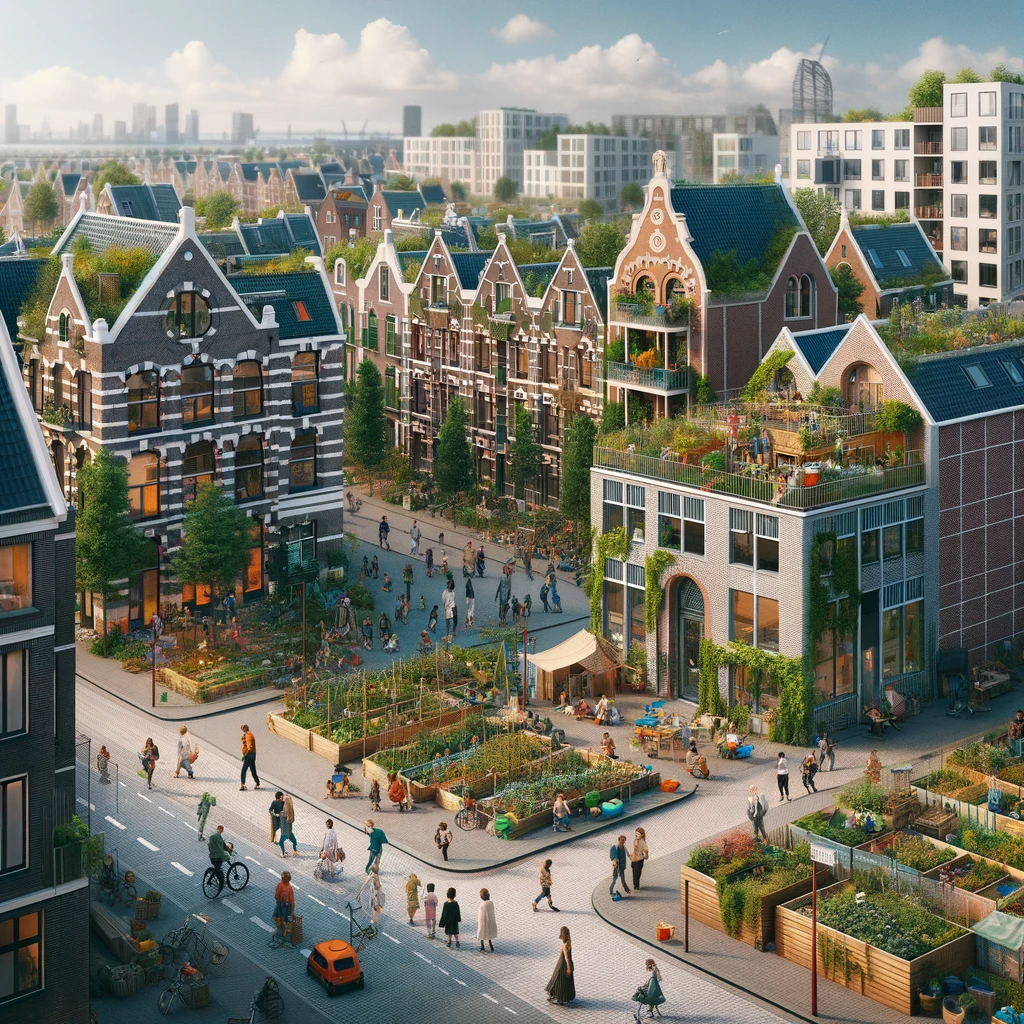

Stop 4:
Where: Germany who: Public plant breeders What: A conference for public plant breeders

Max’s Fourth stop was to attend a conference for public plant breeders in Germany. With a schism unfolding the conference was more eventful that Max had anticipated but gave him some insight that friendly disagreements or competition in the open leads to more and better outcomes than work that is done out of public view.
Max writes:
Yesterday I traveled to Berlin to attend the annual Cultivar Collector Conference (CCC). When I arrived, the door was blocked by protesters holding “NO CRISPR IN MY KITCHEN” posters. I flashed my journalist pass and snuck in a side door.
A colleague at the snackbar waved me over: “Did you hear?” she asked, “The Cultivar Collector Community has split into two camps and everyone’s going crazy.”
Over the last year, a deep ideological divide had pitted the cultivar fetishists community against itself. On one side, the “retainers” were zealously preserving heirloom varieties, shunning any form of contemporary genetic engineering; while at the other extreme, the “retrainers” began embracing cutting-edge technologies like CRISPR, transgenesis and spray-on gene editing to create new, open source cultivars. Both groups claim to be the protectors of agricultural biodiversity, so I interviewed members of each to better understand their perspectives.
The CCC niche group of public plant breeders and seed savers arose as a reaction to corporations and governments who put restrictions on plant breeding and seeds. These “restrainers,” as CCC members call them, use proprietary corporate licenses, strict regulation or onerous paperwork to control and privatize biological material.
It became clear that whether CCC attendees saw the future as high-tech or low-tech, they could all agree on a botanical future that was free, open and more biodiverse.
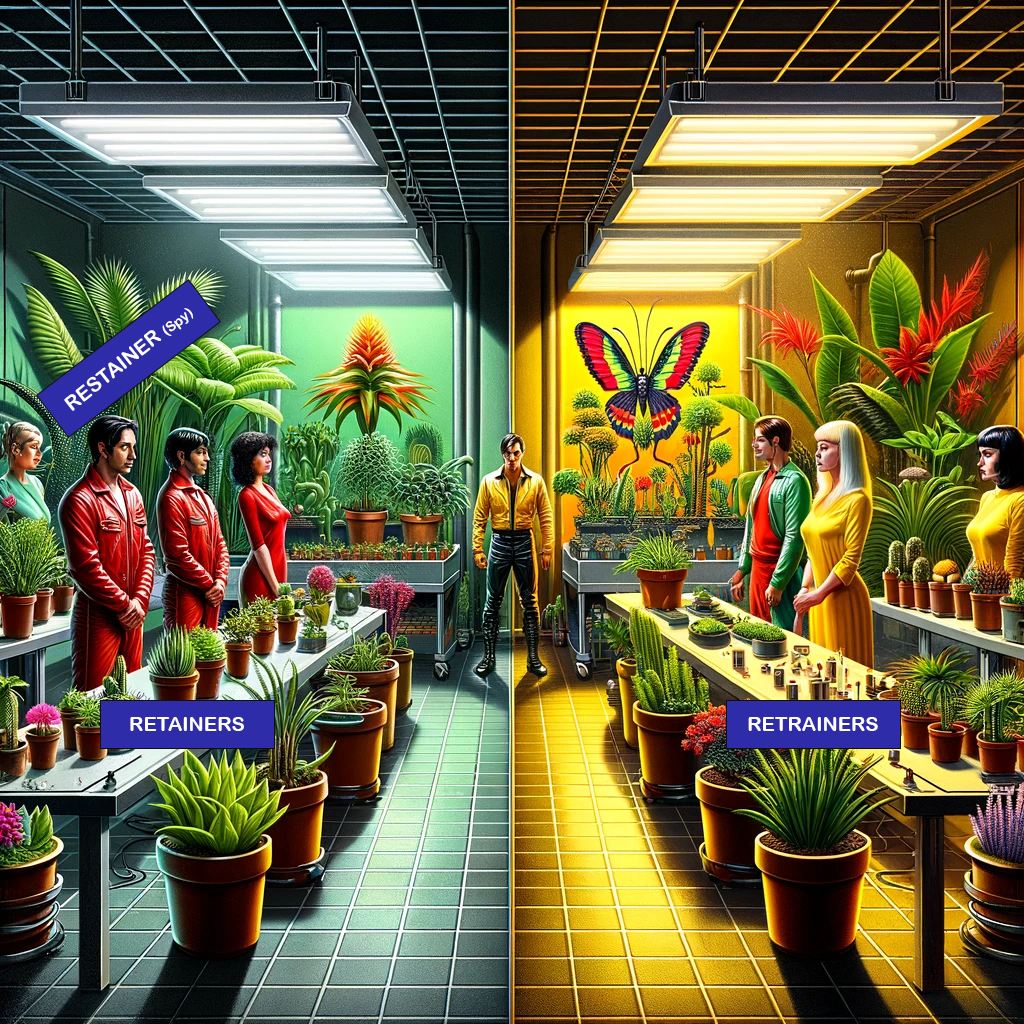

Stop 5:
Where: Poland who: Aleksander What: Farmer
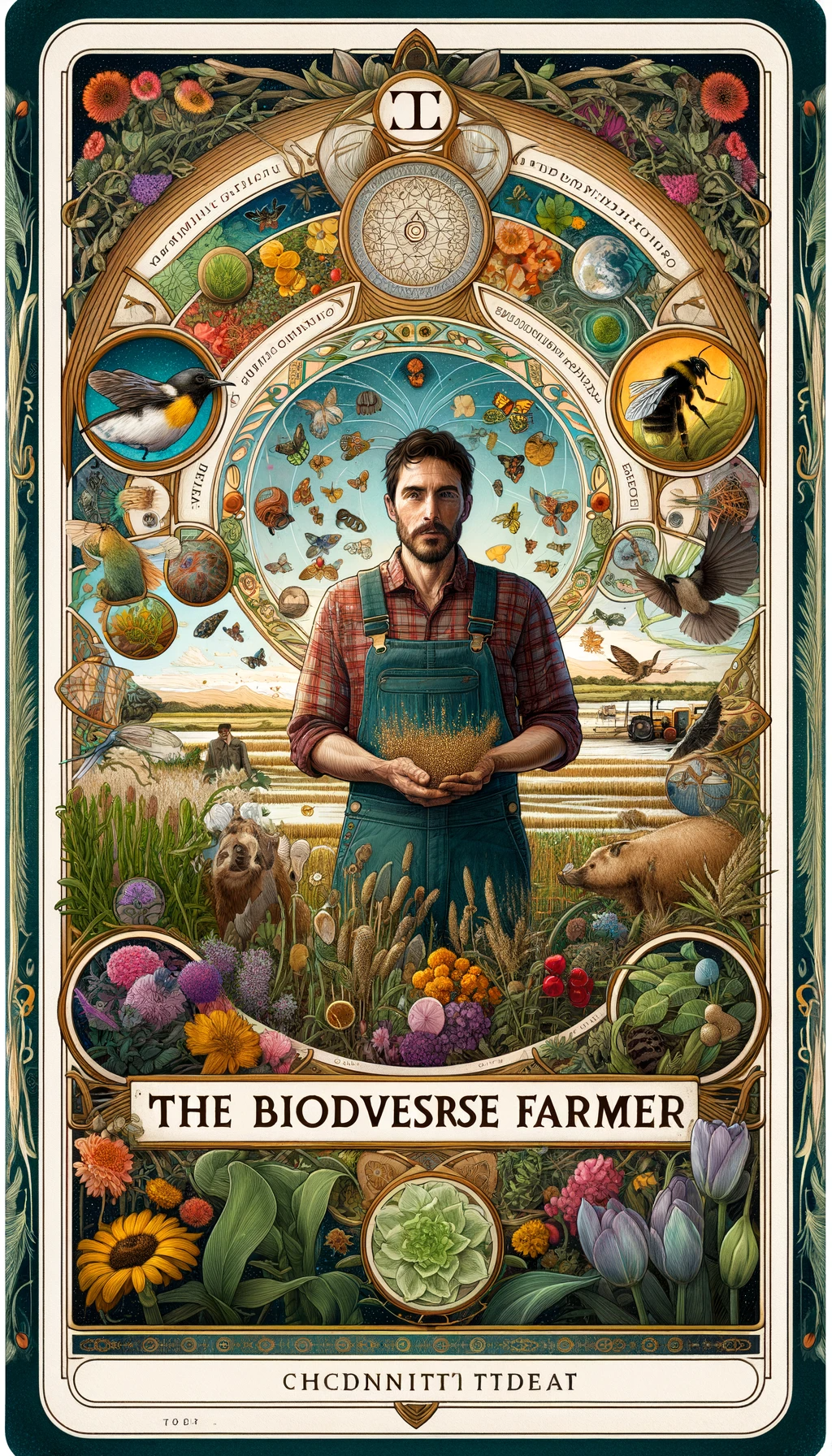
Max’s fifth stop was in Poland, where he spoke to Alexander – a potatoe farmer grappling with the complexities and challenges of adapting to evolving agricultural practices, while questioning the implications of these changes on his own identity and autonomy. The more Aleksander’s farm adapts to new requirements the less he’s sure what he is even farming.
“I used to grow baking potatoes and soy for animal feed. Now my potatoes get processed into starch which is used to make vegan cheese sold in the cities. To be honest I have never eaten vegan cheese myself, and I am not so sure that I want to.
I get annual payments to let my soy fields re-wild and become part of a natural habitat corridor. My biggest source of income is spreading basalt on my fields to soak up atmospheric carbon. It is just some minerals that a truck drops off once a week that end up washing into the ocean, and have nothing to do with me or my land.
I enjoy listening to the songs of the species of birds that are returning each year, but I don’t feel like much of a farmer or like I have any freedom to make decisions for myself.
My wife doesn’t like to see how the changes to our farm have made me less of an independent man and it sometimes feels like I am just taking orders from a computer or policymaker very far away.
Sometimes it feels like these systems value a single insect or bird more than a human farmer.” Alexander Piotrowski.

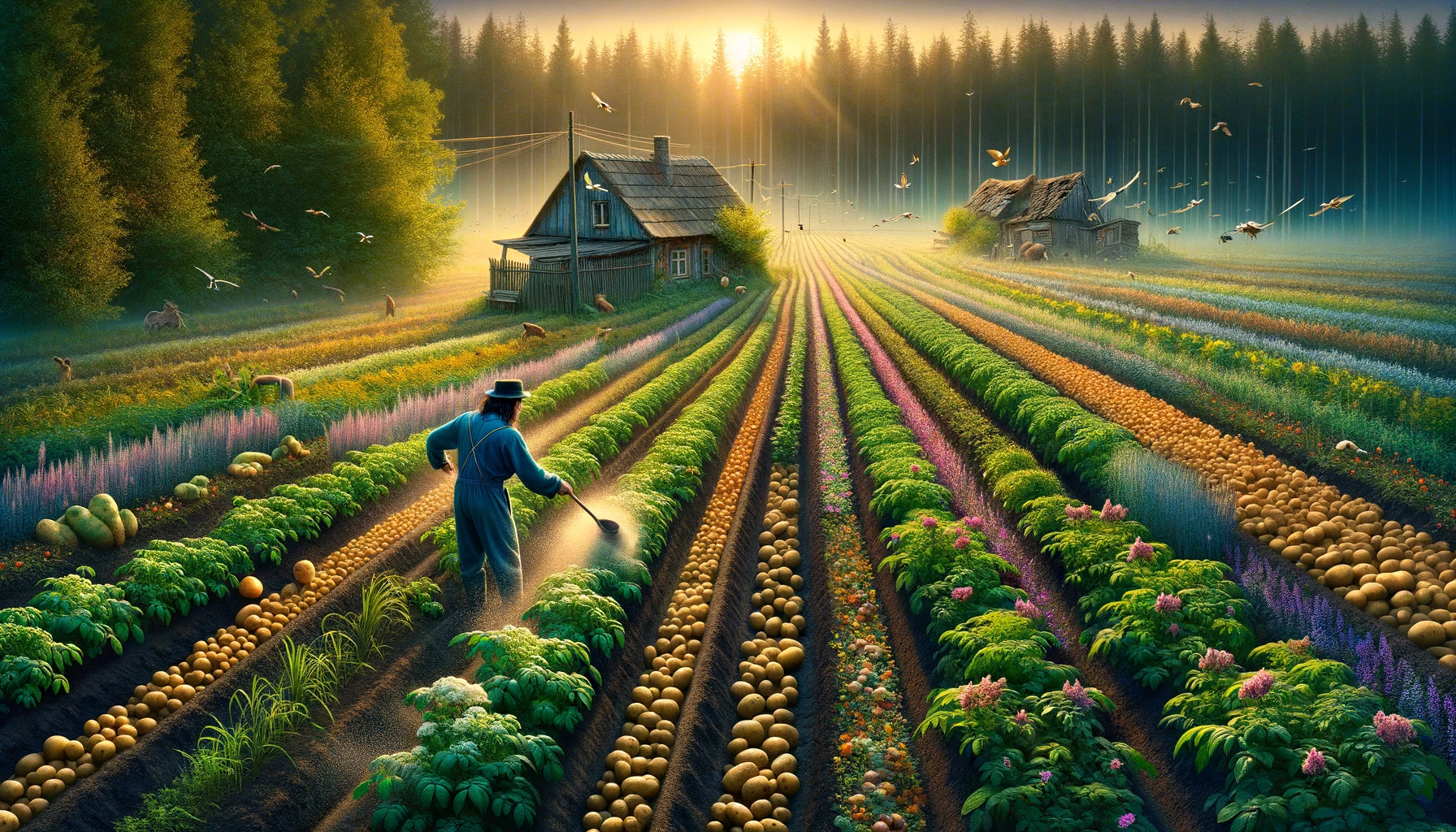

Stop 6:
Where: Serbia Who: representatives from 4 different food perspectives What: A talk show about the future of flavour.
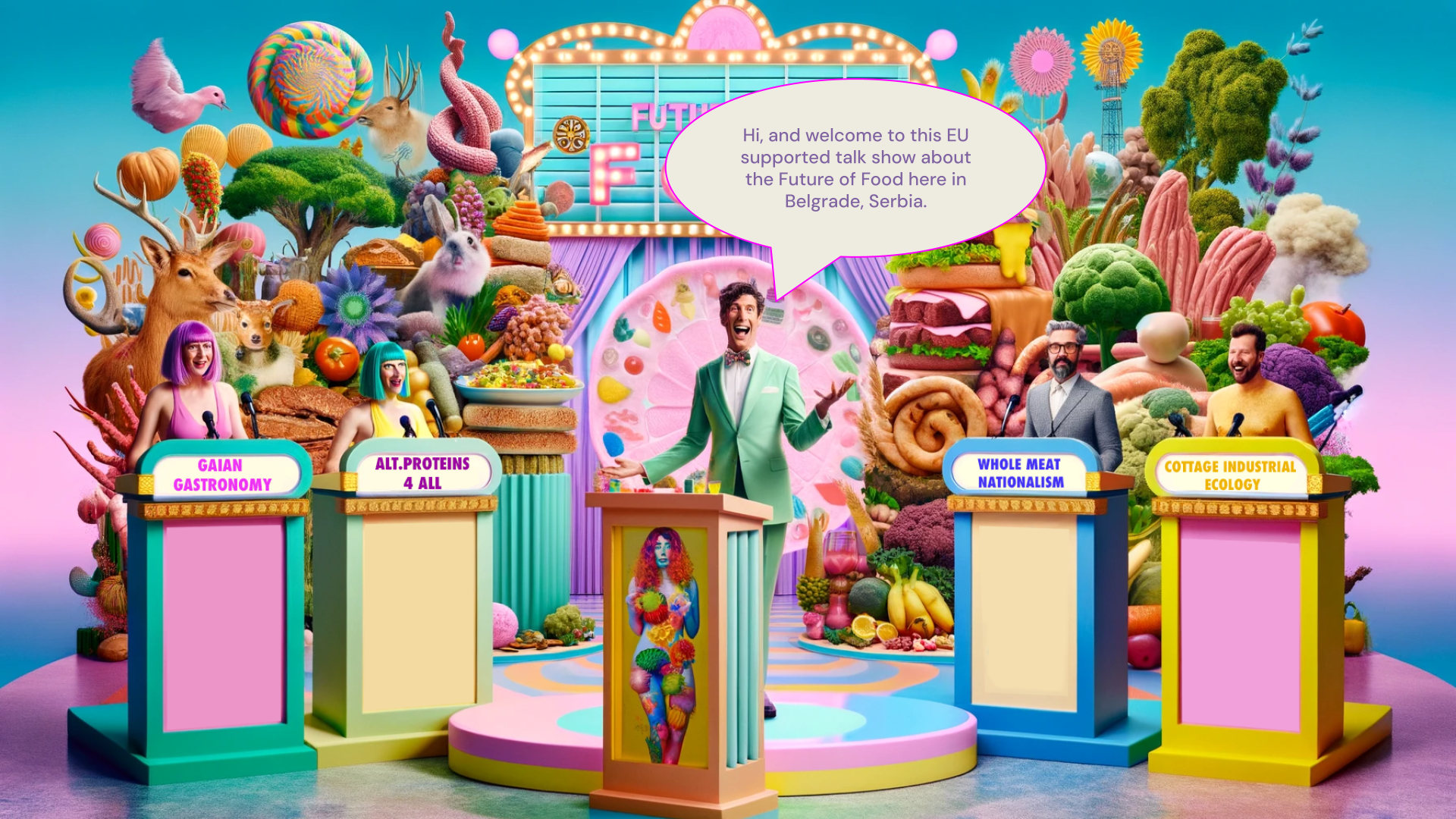
During Max’s sixth stop he explored the Future of Food in Belgrade, Stepping into the dynamic arena of The Future of Food talk show where Four distinct perspectives vied to shape the discourse on the evolving culinary landscape.
Max notes that it seems food is a playground for new possibilities and hybridities, but also a battleground of polarized identity politics.
Here are some highlights Max captured from the 4 different perspectives.
Gaian Gastronomy: “We want to reinvent food as a catalyst for environmental rejuvenation.” This visionary approach seeks to transform food into a force for environmental renewal, envisioning a gastronomic future deeply intertwined with sustainable practices.”
Alternative Proteins: “We wish the EU would be more supportive. Our automated indoor protein factories are optimized for efficiency and use less land & energy.” Advocates for a future where protein production is revolutionized through technology, emphasizing efficiency, and resource conservation.”
Whole Meat Nationalism: “We want meat-heavy, simple food just like grandma cooked and grandpa ate.” A nostalgic nod to tradition, this perspective champions the preservation of meat-centric, time-honored recipes, rooted in the simplicity and flavors of the past.”
Cottage Industrial Ecology: “Zero Waste, Infinite Flavor. AI supply chains update every 20 minutes, and all outputs are inputs for the next recipe.” Embracing a holistic, zero-waste approach, this perspective harmonizes traditional cottage industry values with cutting-edge AI, promising an endless array of flavors while minimizing environmental impact.”

Stop 7:
Where: Italy Who: Elena What: A philosopher

For Max’s sixth stop he visited Elena in Italy – The visionary behind the concept of “Air-Gapped Agriculture.” Elena believes that the ways we grow and eat today creates patterns which will resonate for at least 100 years.
“I had never worked as a farmer, but when the European Commision refused to ban the use of Glyphosate in agriculture—the herbicide known for being carcinogenic—I really became radicalized. I wanted to grow my own healthy food on my own land. But I knew that if this herbicide was going to be used for another decade, I had to put some space between my land, and farms that use Glyphosate.
After thinking about this for some time, I wrote an essay called “Air-Gapped Agriculture.” It describes farms that put distance between themselves and any exposure to chemicals and microplastics from industrial agricultural. So that’s what I did! I built a movement in the watershed where I live, where we began air-gapping our land and focusing on the “taste of place” in this bioregion.
Now my goal is working with others in Italy to transition as much arable land as possible towards agroecological systems that are less susceptible to exploitation or extraction. While some Air-Gapped Agriculture practitioners embrace traditional methods, others experiment with AI and environmental DNA analysis to monitor biodiversity. This has led to philosophical divisions within the movement.” Elena Greco.
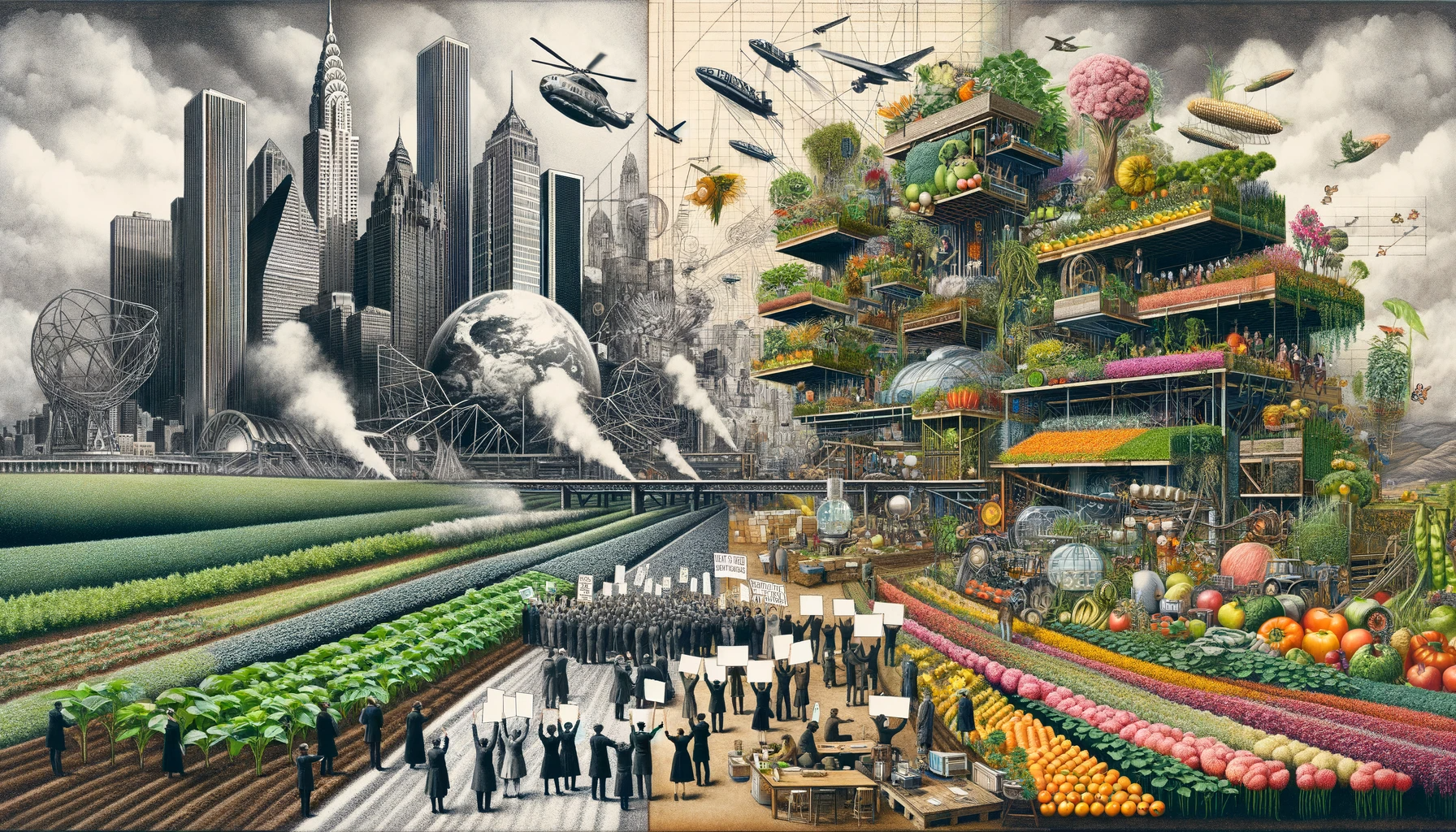
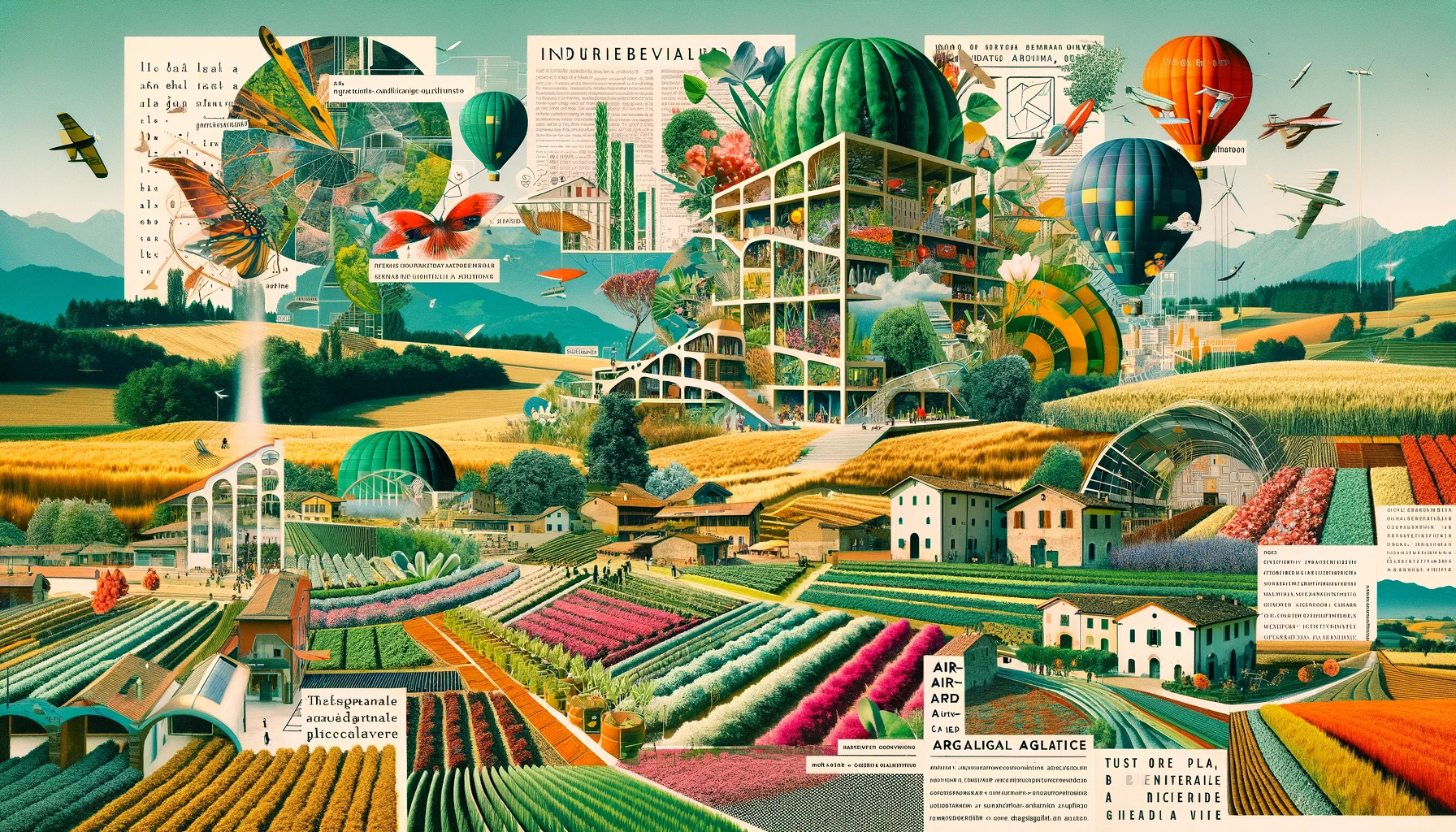
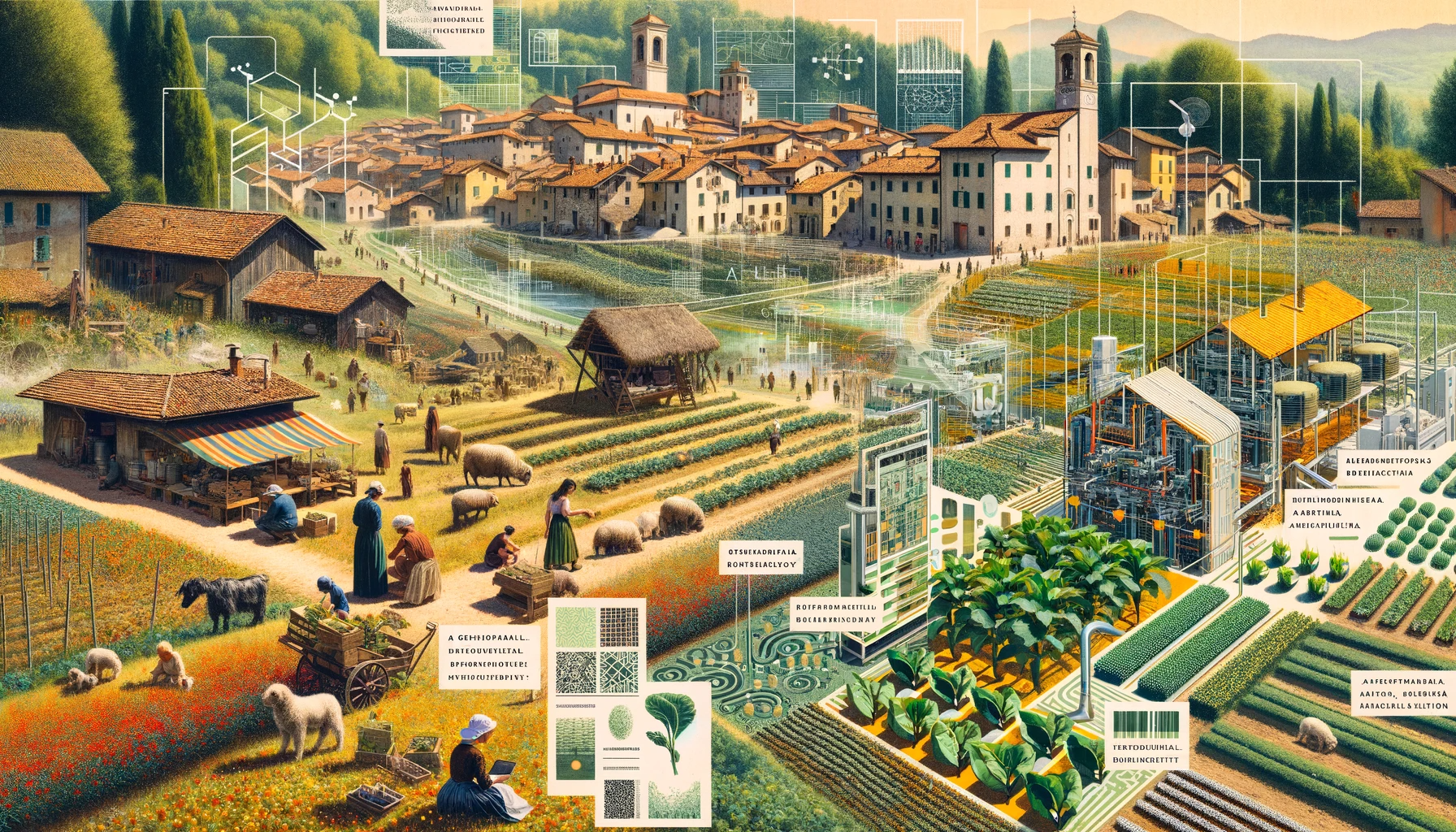
That concludes the December Musae presentation. While there is not a visual consistency throughout, we had fun experimenting with AI image generation to create different styles, colours and tones. As you may have noticed, there are multiple glitches (three arms, and other surreal anatomies) and lots of typos and nonsense letters. As seen with the “biodvesrse farmer” and multiple other typos, the AI is not able to handle text very well within image generation. We are not sure what direction it will take just yet, but now it is time to move beyond the experimentation phase and start to develop an artwork. There are many potential threads to pick up and weave together for the exhibition in Barcelona in April.